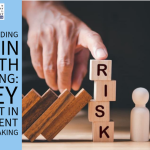The Cost of Inaction: How Financial Advisors Can Help Clients Avoid Costly Mistakes
Introduction:
Have you ever experienced situations where your clients or employees have hesitated and not acted, leading to you having to manage the resulting fallout? It can be frustrating when inaction leads to negative consequences, and it is important to encourage clients and employees to act in a timely manner.
Inaction is a type of action that can be harmful to businesses.
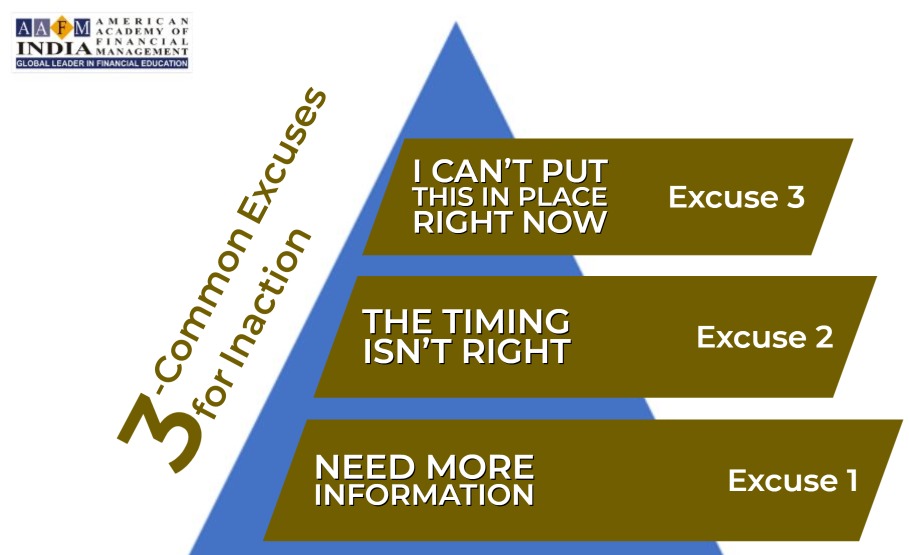
How many times have you heard these excuses.
- We need more information.
- The timing isn’t right.
- I can’t put this in place right now. It’s probably going to take a couple of years to budget for it.
However, delaying important business decisions can have negative long-term consequences that outweigh the short-term benefits of delaying. This is where the need for an organized approach to overcoming inaction is needed most.
“Your problem isn’t ideas. Your problem is you don’t act on them. You kill them.”- Mel Robbins.
➤ Enquire now for CWM Program ➤ Download CWM Brochure
BUSINESS LEADERS’ INACTION
During my conversations with business leaders, I have found that many of them have been in a situation where an important decision needed to be made, but instead of taking action, they chose to do nothing. Unfortunately, this indecision often results in a high cost in terms of time, energy, money, and stress.
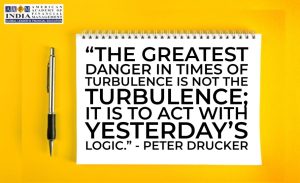 Inaction can be detrimental to a business, and the cost of it is rarely low. The longer a decision is delayed, the greater the consequences can be. The price tag of inaction can include missed opportunities, damaged reputation, increased expenses, and decreased productivity.
Inaction can be detrimental to a business, and the cost of it is rarely low. The longer a decision is delayed, the greater the consequences can be. The price tag of inaction can include missed opportunities, damaged reputation, increased expenses, and decreased productivity.
As a business leader, it is important to understand that the cost of inaction is a real and tangible thing. By taking action in a timely manner, businesses can avoid these costs and improve their chances of success.
A TRUE STORY OF INACTION
I once had a business client who put off hiring support staff for four months, which resulted in two key client managers experiencing burnout and leaving the company.
The cost of replacing these employees quickly and attempting to retain clients was more than INR 22,00,000, not including the revenue lost from missed opportunities due to a lack of energy and resources. The cost of inaction in this case was well over INR 40,00,000, and the negative impact spread through the community and industry, making the company less appealing to potential hires. Such is the cost of not making efforts aimed at overcoming inaction.
Kodak is an epic example of the cost of inaction, one that is hard to forget. Most people are unaware that Kodak invented the first digital camera in the 1970s and filed a patent for it. However, the company failed to develop the technology due to concerns that it would negatively impact their film sales. As a result, their fear of acting resulted in inaction.
concerns that it would negatively impact their film sales. As a result, their fear of acting resulted in inaction.
In 2007, Kodak’s patent on digital camera technology expired, and by 2012 the company had filed for bankruptcy. While Kodak could not have predicted that film would become obsolete, its failure to act and invest in digital technology ultimately cost the company its entire business.
This serves as a poignant reminder that inaction can have severe consequences, especially in rapidly changing industries. Businesses need to be proactive in identifying and pursuing new opportunities to remain competitive and avoid the cost of inaction.
Both of these scenarios involved knowledgeable and experienced business executives who were responsible for making important decisions. However, despite their expertise, they failed to take action in a timely manner and suffered the costly consequences.
While these decision-makers were focused on one aspect of their business, they failed to notice the potential risks and negative outcomes that were unfolding in other areas. As a result, the cost of inaction ended up outweighing the benefits of their initial caution.
This is a stark reminder that inaction can be just as detrimental to a business as making the wrong decision. As a business leader, it’s crucial to consider all aspects of a situation and take action, when necessary, rather than allowing costly consequences to accumulate due to inaction.
Here are three actionable steps for overcoming inaction:
Focusing on the potential benefits of action can be a more effective motivator than calculating the cost of inaction. Instead of dwelling on the consequences of not acting, try flipping the paradigm and focusing on the positive outcomes of acting.

Here are three techniques to help shift your mindset:
1. Countdown method
Countdown method: Count backwards from five to one and commit to taking action at one. This technique can help override your brain’s tendency to procrastinate and activate your prefrontal cortex, which is responsible for decision-making and action-taking.
2. The 40% Rule
The 40% rule: Remind yourself of the 40% rule, which says that when you feel like you’ve hit your limit, you’ve actually only reached 40% of your potential. This can help you push through self-doubt and take action.
3. Action vs. Inaction
Action vs. inaction: Write down the potential outcomes of taking action versus not taking action. This can help you see the benefits of taking action and the consequences of inaction more clearly. For example, “If I do X, Y will happen. If I don’t do X, Z will happen.”
➤ Enquire now for CWM Program ➤ Download CWM Brochure
WHY THESE STEPS WORK?
According to motivational coach Mel Robbins, counting backwards is a metacognition tool that can help individuals rewire their brain towards positive action and create lasting behavioral change. This helps overcoming inaction by distracting the brain from worry and fear and enabling it to focus on the goal at hand. By counting backwards, you can break unconscious habit loops and replace them with deliberate decision making, engaging the prefrontal cortex – the rational part of your brain – and interrupting the automatic patterns wired into the limbic system. Over time, this shift can improve confidence and inner strength, resulting in a deeper transformation. As the countdown-to-five rule becomes a habit, individuals can overcome their brain’s resistance to change and act towards their goals.
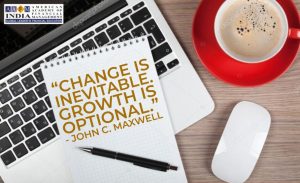 The 40% rule is a proven and uncomplicated concept that holds true. Our brains tend to trick us into thinking that we’ve reached our limit when we’re only at 40% of our capacity. For example, when we feel drained, exhausted, or overwhelmed, we often believe that we can’t do anything more. But the truth is, we still have 60% of our energy and resources remaining.
The 40% rule is a proven and uncomplicated concept that holds true. Our brains tend to trick us into thinking that we’ve reached our limit when we’re only at 40% of our capacity. For example, when we feel drained, exhausted, or overwhelmed, we often believe that we can’t do anything more. But the truth is, we still have 60% of our energy and resources remaining.
A study conducted in 2008 showed that participants who were given a placebo instead of caffeine were able to lift more weight than those who were given the actual caffeine. This demonstrates that what we often consider impossible is just our brain setting limits at the 40% threshold. Our brains put a governor on us when we encounter physical or mental challenges, but we can overcome it by realizing that we have more in us than we think.
Express your thoughts with gratitude and embrace the potential of documentation. The somatosensory experience of physically writing on paper can have a profound impact on the brain, encoding and instilling long-lasting cognitive changes. Writing is therapeutic and can also help in overcoming inaction as it prompts deep breathing, which increases blood flow and oxygen to the brain, clearing any mental cobwebs. It’s akin to doing stretches before a workout or a light jog before a race, priming the body for optimal performance. Writing stimulates various parts of the brain, forging new connections and promoting growth. When these new connections are linked to a specific action, it trains the brain to cope with the change it’s about to face.
One added benefit of writing out potential solutions and the advantage of taking action is that the act of writing itself can be a form of taking action. As you put your thoughts down on paper, you are engaging in a cognitive process that can help you see the situation more clearly and identify the best course of action. Writing can also help to reduce anxiety and stress, giving you a greater sense of control over the situation. So even if you haven’t taken any physical action yet, the act of writing can still be a powerful tool to help overcome inaction.
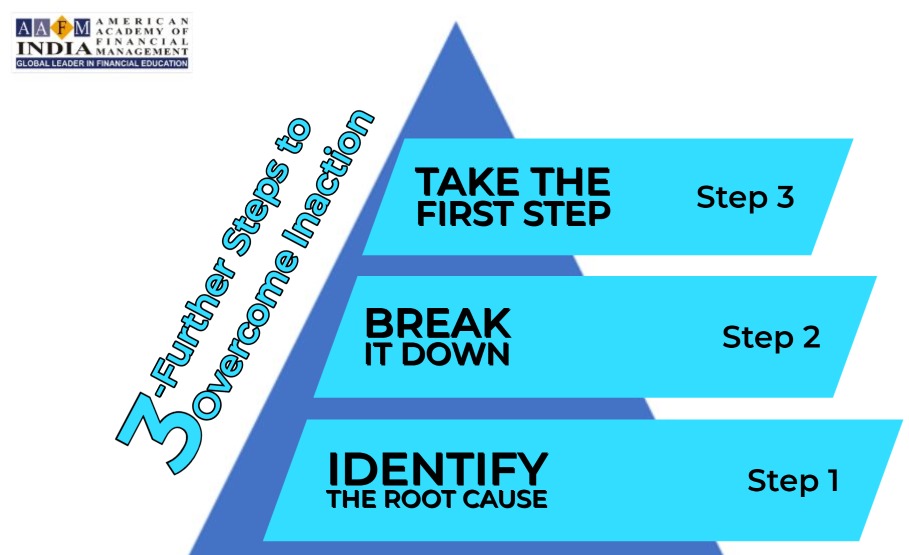
FURTHER STEPS
Identify the root cause:
The first step to overcoming inaction is identifying the underlying reason behind it. This could be fear, lack of resources, or uncertainty. Once the root cause is identified, it’s easier to develop a plan to address it.
Break it down:
When faced with a complex problem, it can be overwhelming to know where to start. Breaking the problem down into smaller, more manageable pieces can make it easier to act. Prioritizing tasks and setting achievable goals can help to build momentum and make progress.
Take the first step:
Taking the first step can be the hardest part, but it’s also the most important. Even a small action can create a sense of momentum and build confidence. By breaking the problem down into smaller pieces and acting, the path forward becomes clearer and more achievable.
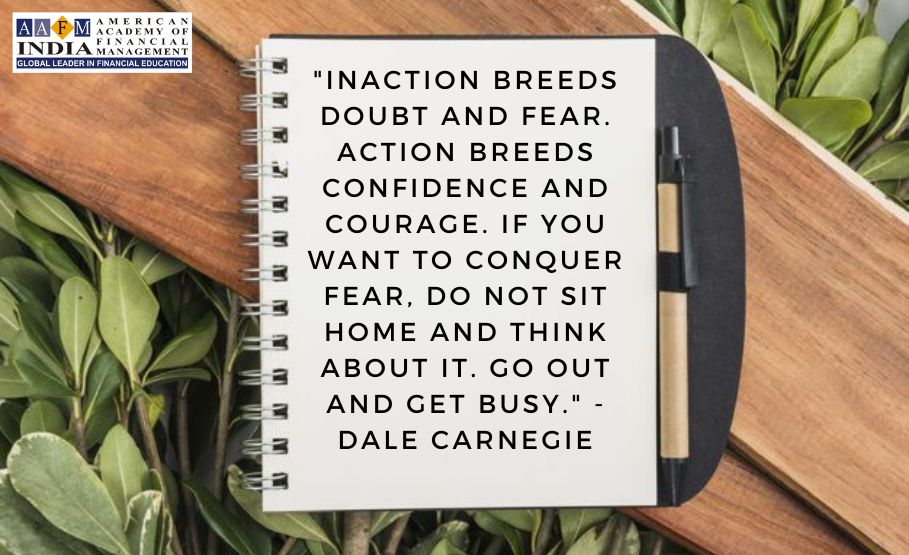 Act today, and every day after that, to make progress towards your goals!
Act today, and every day after that, to make progress towards your goals!
Although it is important to recognize the consequences of acting or not acting, it can be easy to slip back into old habits once the negative effects of inaction fade away. That’s why the three-step approach is so effective – it produces positive results and creates lasting change by overcoming inaction. Let’s commit to making this change and keep practicing until it becomes second nature. Acting is a habit that can lead to great outcomes.
➤ Enquire now for CWM Program ➤ Download CWM Brochure
Great Quotes on Inaction!
“Inaction breeds doubt and fear. Action breeds confidence and courage. If you want to conquer fear, do not sit home and think about it. Go out and get busy.” – Dale Carnegie
“The greatest danger in times of turbulence is not the turbulence; it is to act with yesterday’s logic.” – Peter Drucker
“Inaction is not only the result, but the cause, of fear. Perhaps the action you take will be successful; perhaps different action or adjustments will have to follow. But any action is better than no action at all.” – Norman Vincent Peale
“The best way to predict the future is to create it.” – Abraham Lincoln
“The future is something which everyone reaches at the rate of sixty minutes an hour, whatever he does, whoever he is.” – C. S. Lewis
Great Quotes on Change!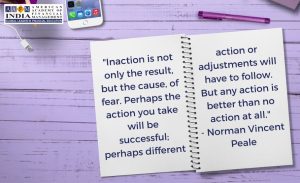
“The only way to make sense out of change is to plunge into it, move with it, and join the dance.” – Alan Watts
“Change is the law of life. And those who look only to the past or the present are certain to miss the future.” – John F. Kennedy
“If you don’t like something, change it. If you can’t change it, change your attitude.” – Maya Angelou
“Change is inevitable. Growth is optional.” – John C. Maxwell
“The first step toward change is awareness. The second step is acceptance.” – Nathaniel Branden







